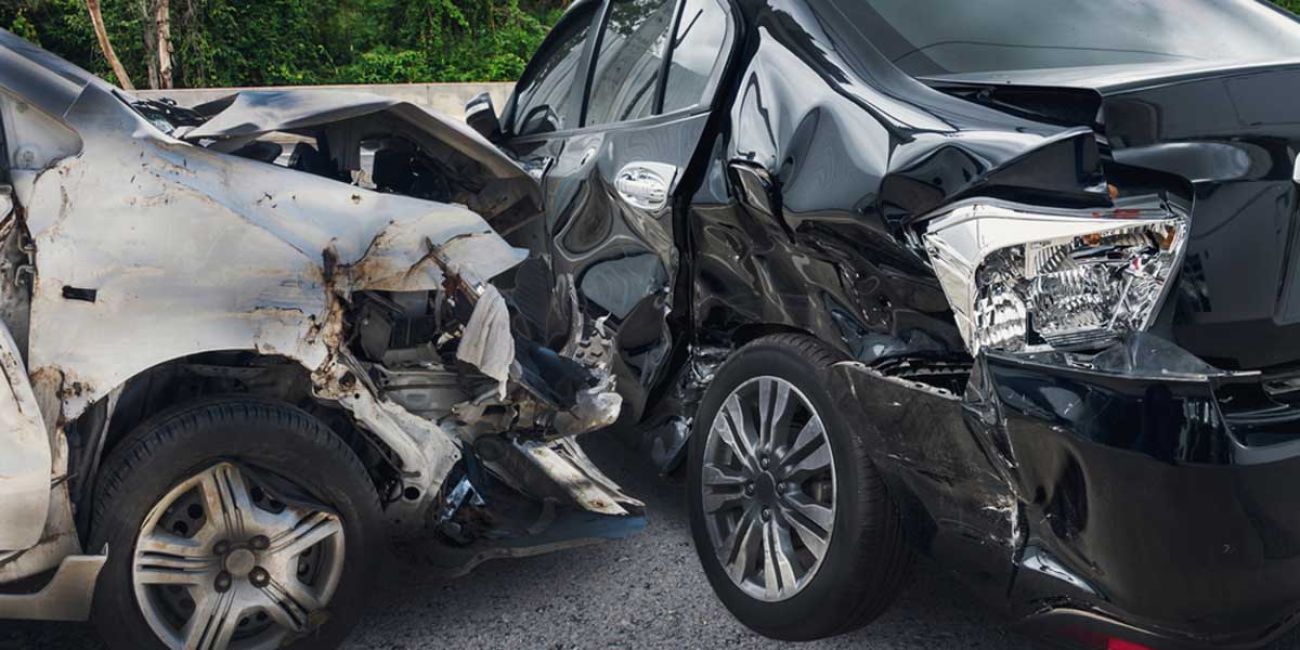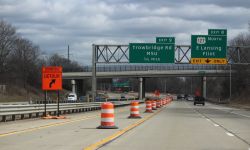Fatal crashes remain high in post-pandemic Michigan, risky driving blamed

Michigan continues to have a higher number of fatal crashes since the pandemic began, highlighted by big increases in sparsely populated areas of northern Michigan, according to recently released state data.
Authorities attribute the sustained rise during the pandemic to a combination of faster, more risky driving — the so-called “idiot” factor — and fewer traffic stops by law enforcement.
The number of fatal accidents last year was 30 percent higher in the northern Lower Peninsula compared to crash numbers in 2019, the year before COVID-19 swept through Michigan. The biggest jumps were in Mecosta and Oscoda counties.
There were also significant (if lower) increases in deadly crashes in more populated areas of the state, including a 25-percent rise in metro Detroit last year over 2019, and 21 percent rise in the Bay region, which includes the Thumb, particularly Huron, Tuscola, Sanilac counties, records show.
Related:
- Troy residents sick of traffic noise get $10M from state for sound walls
- Michigan’s new hands-free driving law takes effect Friday. What to know
- Michigan moves to use cameras to issue speeding tickets in construction zones
Indeed, the number of fatal crashes rose in all regions of Michigan except the Upper Peninsula: The 15 counties of the U.P. saw an 8.1 percent decline over this period, according to Michigan crash data analyzed by Bridge Michigan.
In west Michigan, the increase was 5 percent. It was up 8 percent in southwest Michigan and just under 16 percent in the south-central part of the state.
More alcohol, fewer seat belts
Rural roads have long been considered disproportionately more deadly, with just under half of all traffic deaths nationwide occurring on them despite those areas accounting for less than 20 percent of the U.S. population, said Pam Shadel Fischer, senior director of external engagement for the Governors Highway Safety Association, which represents state highway officials.
Part of that is the challenge of getting emergency help to crash sites. But Shadel Fischer said some of it is behavior: More rural crashes involve alcohol and more rural motorists aren’t wearing seat belts, with 58 percent of rural crash victims not wearing them compared to 42 percent of fatalities in suburban and urban areas.
But tragedy also hit urban areas hard. Metro Detroit recorded increases in fatal crashes as well with Wayne County, the state’s most populous, jumping from 151 fatal crashes in 2019 to 201 in 2022. Oakland County reported a 21 percent increase, from 63 to 76 fatal crashes.
Traffic experts expected deadly crashes to recede during the pandemic, particularly the early stages, as home-bound motorists drove millions of fewer miles in an effort to reduce spread of the virus. Indeed, deadly crashes have been in decline for decades, hitting a low of 32,700 nationally in 2014 (the peak was more than 54,000 deaths in 1972).
Instead, fatal crashes jumped in Michigan and across the country in 2020 and remained at higher rates in 2021 and again last year. It did so even as overall vehicle crashes fell 22 percent in 2020. Fatal crashes rose from 902 in 2019 to 1,010 in 2020. It’s gone up since then with 1,068 crashes in 2021 and 1,053 last year.
Changes in law enforcement
COVID-19 also changed how, and how often, police officers interacted with motorists. Departments in Michigan and elsewhere tried to limit face-to-face encounters. Some motorists saw that as an opportunity to speed and drive recklessly, experts theorize.
Risky behaviors that soared early in the pandemic have continued, said Lt. Lance Cook of Michigan State Police.
The percent of fatal crashes in Michigan attributed to reckless driving jumped 79 percent between 2019 and 2022, from 52 to 93. Fatal crashes attributed to speeding rose 18 percent, from 177 to 209, and those where the driver disregarded a traffic signal jumped 26 percent from 58 in 2019 to 73 last year.
Cook attributes some of the rise to the unsettling effects of the pandemic, when people stayed home for long stretches, then acted out when they got behind the wheel.
During other turbulent times in the nation’s history — during wars and economic distress — accident rates rose, Cook said, because “people tend to drive like idiots” during those times.
National traffic studies have found more alcohol and drug use during the pandemic and fewer drivers wearing seat belts.
“So we’re going backwards,” said Shadel Fischer of the Governors Highway Safety Association. Motorists must change risky behaviors in order for the rates to fall, she said.
That means less speeding, less drunk driving and more caution. Michigan State Police and departments around the state launched a campaign in November to issue more speeding tickets in hopes of slowing down motorists.
But changing those behaviors through increased enforcement alone can be hard, Shadel Fischer said. “We can’t put a police officer on every corner.”
She advocates that law enforcement and civic leaders take advantage of automated cameras and speed detectors that can flag speeders and red-light runners, sending a ticket to the owner of the car.
It’s a touchy subject for some, who frown upon the technology and don’t think it’s fair they can get a ticket without a cop handing it out.
But Shadel Fischer said the devices could help curb bad behavior and save lives.
“We want technology when it comes to safety,” she said, like air bags, but not when it comes to enforcement. “We can’t have it both ways.”
In June, the Michigan House approved a measure allowing for automated traffic cameras in work zones as a way of deterring speeders. It must pass the state Senate and be signed by Gov. Gretchen Whitmer before it becomes law.
If approved, the cameras would be installed and, after detecting those going 10 mph or higher above the posted limit, would take a picture of the license plate and a ticket would be sent to the owner of the vehicle.
The measure garnered bipartisan support, passing 67-42 in the House on June 22. It is now in a Senate Transportation and Infrastructure committee.
See what new members are saying about why they donated to Bridge Michigan:
- “In order for this information to be accurate and unbiased it must be underwritten by its readers, not by special interests.” - Larry S.
- “Not many other media sources report on the topics Bridge does.” - Susan B.
- “Your journalism is outstanding and rare these days.” - Mark S.
If you want to ensure the future of nonpartisan, nonprofit Michigan journalism, please become a member today. You, too, will be asked why you donated and maybe we'll feature your quote next time!




